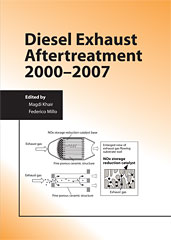Technical Paper
A Comparison Between Different Hybrid Powertrain Solutions for an European Mid-Size Passenger Car
2010-04-12
2010-01-0818
Different hybrid powertrains for a European mid-size passenger car were evaluated in this paper through numerical simulation. Different degrees of hybridizations, from micro to mild hybrids, and different architectures and power sources management strategies were taken into account, in order to obtain a preliminary assessment of the potentialities of different hybrid systems for the European passenger car market. Both diesel and gasoline internal combustion engines were considered: a 1.6 dm₃ Common Rail turbocharged diesel, and a 1.4 dm₃ spark ignition turbocharged engine, equipped with an innovative Variable Valve Actuation system. Diesel hybrid powertrains, although being subject to NOx emissions constraints that could jeopardize their benefits, offered substantial advantages in comparison with gasoline hybrid powertrains. Potentialities for fuel consumption reductions up to 25% over the NEDC were highlighted, approaching the 2020 EU 95 g/km CO₂ target.


